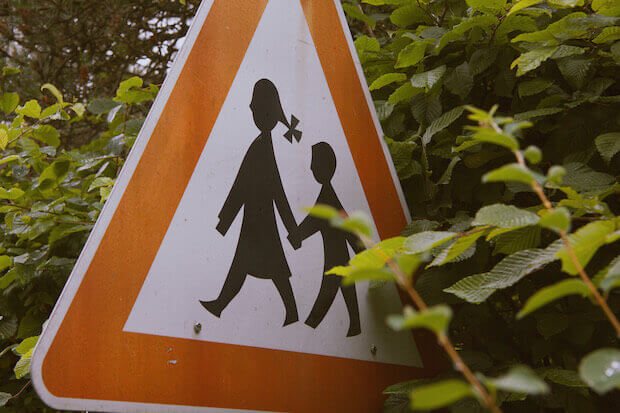
Pedestrian safety is one of the most basic but essential skills that you will teach your children in their lives. Teaching your children the rules of the road will ensure that you can have some peace of mind when your kids are outside the house. This is a big problem — Parachute Canada, a non-profit organization which is dedicated to stopping accident-related deaths reported in 2008 that “child pedestrian injuries were the leading cause of injury-related death” for Canadian kids under 14. In a PDF document, they’ve made available has some great tips on how to prevent these injuries through proper education. You can download it here:
http://www.parachutecanada.org/downloads/injurytopics/ChildPed_Report_07:08.pdf
With this in mind, we’ll be dedicating today’s post to teaching pedestrian safety to kids.
Go beyond the basics when teaching pedestrian safety to kids
Sometimes kids don’t get much pedestrian safety education beyond recognizing stoplight signals and learning to look both ways before crossing the road. While the above road safety skills are a great way to start, it’s not uncommon for the learning about road rules to stop there. That is, until children start studying to drive in their teenage years. Need proof? Ask your kids or their friends to identify all the signs they see when you take them on a drive. There’s a good chance that there will be many gaps in their knowledge. We’d advise helping them learn as much as possible about road rules, even if your kids aren’t close to driving age yet. Awareness is a big factor in preventing pedestrian-vehicle accidents, and developing a working knowledge of road rules can only help.
Beyond looking both ways, what other traffic rules should kids know?
We’re going to assume that you’ve already taught your kids the most rudimentary traffic basics, such as going with — not against — the flow of traffic, and waiting for pedestrian signal lights. If you haven’t already, we’d advise you to get on it! However, this section is dedicated to teaching children more knowledge about the road that may not be taught so often.
Teach your children how to recognize the types of traffic stops
Can your child tell the difference between a three-way stop and a four-way stop? Which road (if any) are ‘through’ roads? What does a red blinking light mean? As a simple exercise, ask your kids to look around and count the stop signs at each intersection (especially the ones not facing them). This is a valuable skill that will help your kids anticipate where cars are coming from. We’d advise showing them the ‘rhythm’ of a four-way, so they can know which car’s turn it is to move forward. This will allow them to notice when something is wrong. Like, for instance, an unmindful driver who disobeys the stop regulations.
Teach kids how to recognize one-way roads
Unless you are a driver (which many kids aren’t), it’s not always obvious if a road is one-way or not. For example, Vancouver signage for one-road streets is often pretty small — a narrow white-on-black arrow tucked to the side of a street sign. To help kids understand the flow of traffic, explain to them the difference between white lane markers and yellow ones. For example, if they can’t see any yellow on a street, it’s probably one way.
Also, get your students to observe the direction of parked cars on the side of the road. That’s also often a good indicator of traffic flow. This skill will help kids pick a road that helps them travel with the flow of traffic.
Teach students to recognize hazard warnings
Children should know what every hazard warning looks like. This will help them anticipate when, and if, a car will go out of control. For instance, kids should recognize the sharp turn warning sign, so they can be mindful of the fact that some cars may swerve out of a lane if it’s going too fast. This will help children plan their routes to avoid danger, if necessary.
Regularly test your kids on road safety rules and regulations
Of course, the above regulations we listed are only suggestions to get you started. Don’t stop there! It would probably be wise to regularly ask your kids if they can recognize a particular sign when you go on a drive, walk or bike ride. If you detect any knowledge gaps, try giving your child an explanation.




